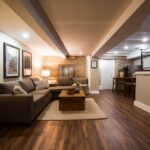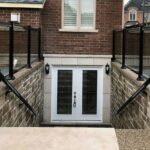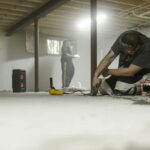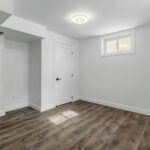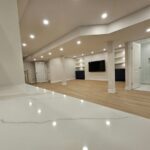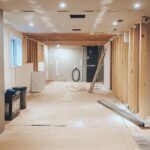Advanced Soundproofing Techniques for Basements

Transforming your basement into a functional and comfortable living space involves more than just aesthetic upgrades; it requires attention to detail, especially when it comes to managing noise. Whether you’re planning to turn your lower level into a home theater, a serene study, or even a rentable apartment, soundproofing is a critical step not to be overlooked.
Effective soundproofing not only enhances privacy but also significantly improves the quality of life by keeping unwanted noise out and desired sounds in. In this post, we’ll dive deep into advanced soundproofing techniques specifically tailored for basements. From understanding how sound travels through spaces to implementing state-of-the-art materials and methods, we’ll guide you through everything you need to create a quiet and peaceful basement environment.
Understanding Sound Transmission
Soundproofing your basement begins with understanding how sound travels and identifying the unique challenges of a subterranean environment. There are two main pathways for sound transmission: through the air (airborne sound) and through solid materials (structure-borne sound). Addressing each type is essential for effective soundproofing.
Airborne Sound
Airborne sound is noise that travels through the air, such as conversations, television audio, or music. This type of sound can easily penetrate basement floors and walls if they are not adequately insulated. Effective soundproofing strategies must include sealing gaps and using materials that absorb or block these sound waves. If you’re planning to rent out your basement, it’s particularly important to manage airborne sounds to ensure privacy and comfort for tenants. This attention to detail can increase the rental value of your property by offering a quieter, more secluded living space.
Structure-borne Sound
Structure-borne sound, or impact noise, occurs when sound waves travel through a building’s structural elements, like the vibrations from footsteps or a running appliance above. Tackling this noise type requires structural modifications to interrupt the sound pathways.
By comprehensively understanding and addressing both airborne and structure-borne sounds, you can significantly enhance the livability and appeal of your basement, whether for personal use or as a rental property.
Assessing Your Basement’s Soundproofing Needs
Before diving into the specifics of soundproofing techniques, it’s crucial to evaluate the current sound environment of your basement. This assessment will help you identify the primary sources of noise and determine the appropriate level of soundproofing required for your space. Here’s how to effectively assess your basement’s soundproofing needs:
Identify the Sources of Noise
Start by pinpointing where noise comes from. This may include external noises like traffic or footsteps from the floor above. Use a sound level meter to quantify the noise levels, which can help in selecting the right soundproofing measures.
Consider the Intended Use of the Basement
The purpose of your basement plays a critical role in how much soundproofing is needed. A home theater or recording studio will require more sophisticated soundproofing compared to a storage area. If the basement is intended as a rental unit, consider the comfort and privacy of future tenants by implementing comprehensive soundproofing solutions that address both airborne and structure-borne sounds.
Evaluate the Existing Structure
Examine the construction of your basement. Older homes might have less effective sound insulation, and certain materials like concrete may require different soundproofing strategies than wood-framed structures. Assessing the physical structure will guide you in choosing the most effective improvements.
Set Soundproofing Goals
Determine what you want to achieve with your soundproofing project. Are you looking to completely isolate the basement from the rest of the house, or are you primarily concerned with minimizing specific types of noise? Setting clear goals will help in planning the project and selecting the appropriate techniques and materials.
Advanced Soundproofing Techniques
Once you’ve assessed your basement’s specific needs, you can employ various advanced soundproofing techniques to tackle different types of noise. Here’s a breakdown of the most effective methods:
Decoupling
Decoupling is a technique used to separate the contact points of building materials, thereby reducing the pathway for sound to travel through structures. This is especially effective for minimizing structure-borne sounds.
- Install Resilient Channels: These metal channels are used to create a separation between the drywall and the framing, effectively breaking the sound path.
- Use Sound Isolation Clips: These clips can be attached to the joists, and drywall is then mounted to the clips, providing an additional layer of separation and significantly reducing sound transmission.
Adding Mass
Adding mass to walls, floors, and ceilings is a fundamental way to block sound from entering or leaving a space.
- Mass-Loaded Vinyl (MLV): Apply MLV directly to studs or joists before installing drywall to add mass and improve sound blocking.
- Additional Layers of Drywall: Applying multiple layers of drywall with damping compounds between them can significantly increase mass and reduce sound transmission.
Damping
Damping involves using materials that dissipate sound energy as heat and is effective at reducing both airborne and structure-borne noise.
- Apply Damping Compounds: Products like Green Glue can be applied between layers of drywall to absorb and dissipate sound vibrations.
- Acoustic Caulk: Use this specially formulated caulk to fill gaps and seams in drywall, which helps prevent sound leaks.
Absorption
Absorptive materials can help manage echo and reverberation within the room, improving the overall acoustics.
- Install Acoustic Panels or Foam: These can be placed on walls and ceilings to absorb sound that would otherwise bounce around the room.
- Use Acoustic Tiles: Ideal for ceilings, these tiles help absorb sound and are available in various designs to match your decor.
Sealing Gaps
Even small gaps can be significant avenues for sound to travel through.
- Weatherstripping: Apply around doors and windows to seal gaps that might allow sound to pass.
- Acoustical Sealant: A must-use around outlets, light fixtures, and other penetrations, this sealant blocks pathways for sound.
Go-to Soundproofing Materials
Equipping yourself with the right materials and tools is essential for a successful soundproofing project.
Soundproofing Materials
- Mass-Loaded Vinyl (MLV): This dense material is excellent for adding mass to walls and ceilings. It’s flexible and can be cut to fit various spaces, making it a versatile choice for soundproofing.
- Resilient Channels: These metal channels can dramatically improve the sound insulation properties of walls and ceilings by creating a decoupled barrier.
- Sound Isolation Clips: These are used to isolate the drywall from the structural framing, further reducing sound transmission.
- Green Glue: A viscoelastic damping compound that can be sandwiched between layers of drywall to dissipate sound vibrations.
- Acoustic Panels and Foam: These materials absorb sound and are typically used to treat surfaces within the room to prevent echoes and reverberation.
Sealants and Caulks
- Acoustic Caulk: Specifically designed for sealing joints, seams, and gaps in soundproofing applications, this caulk remains flexible and effectively blocks sound leaks.
- Weatherstripping: Essential for doors and windows, weatherstripping seals gaps that could let sound travel in or out of the basement.
Professional Help
While many soundproofing tasks can be handled as DIY projects, some homeowners may prefer to hire professionals, especially for complex installations like decoupling and applying damping compounds effectively. A skilled contractor can ensure that soundproofing is done correctly, providing maximum noise reduction. If you’re considering a basement renovation with soundproofing in mind, contacting Yorkland Homes can be your best step forward. As experts in basement renovations, Yorkland Homes offers specialized services that ensure your space is not only aesthetically pleasing but also acoustically optimized. Reach out to us today to discuss how we can transform your basement into a quiet and peaceful retreat.


